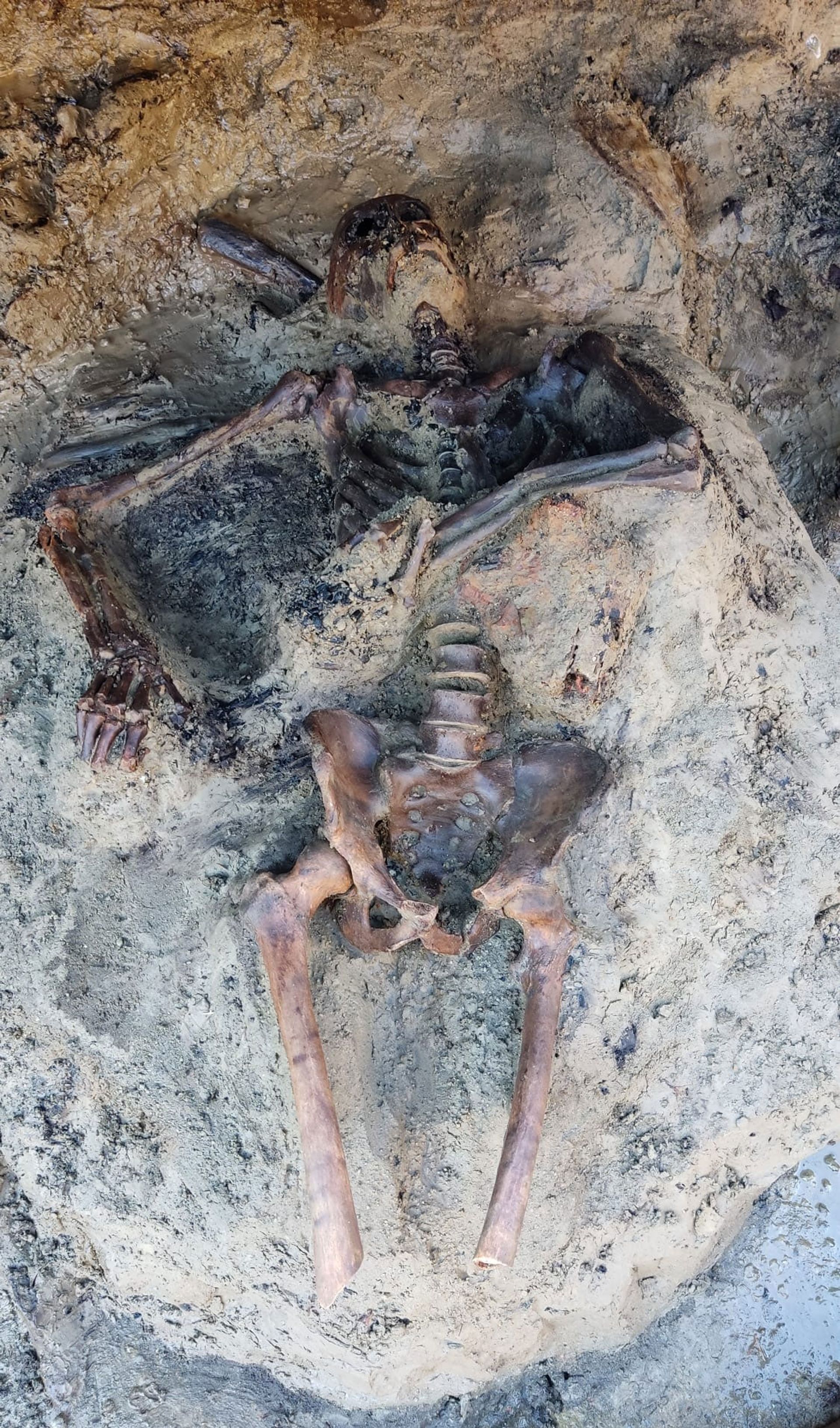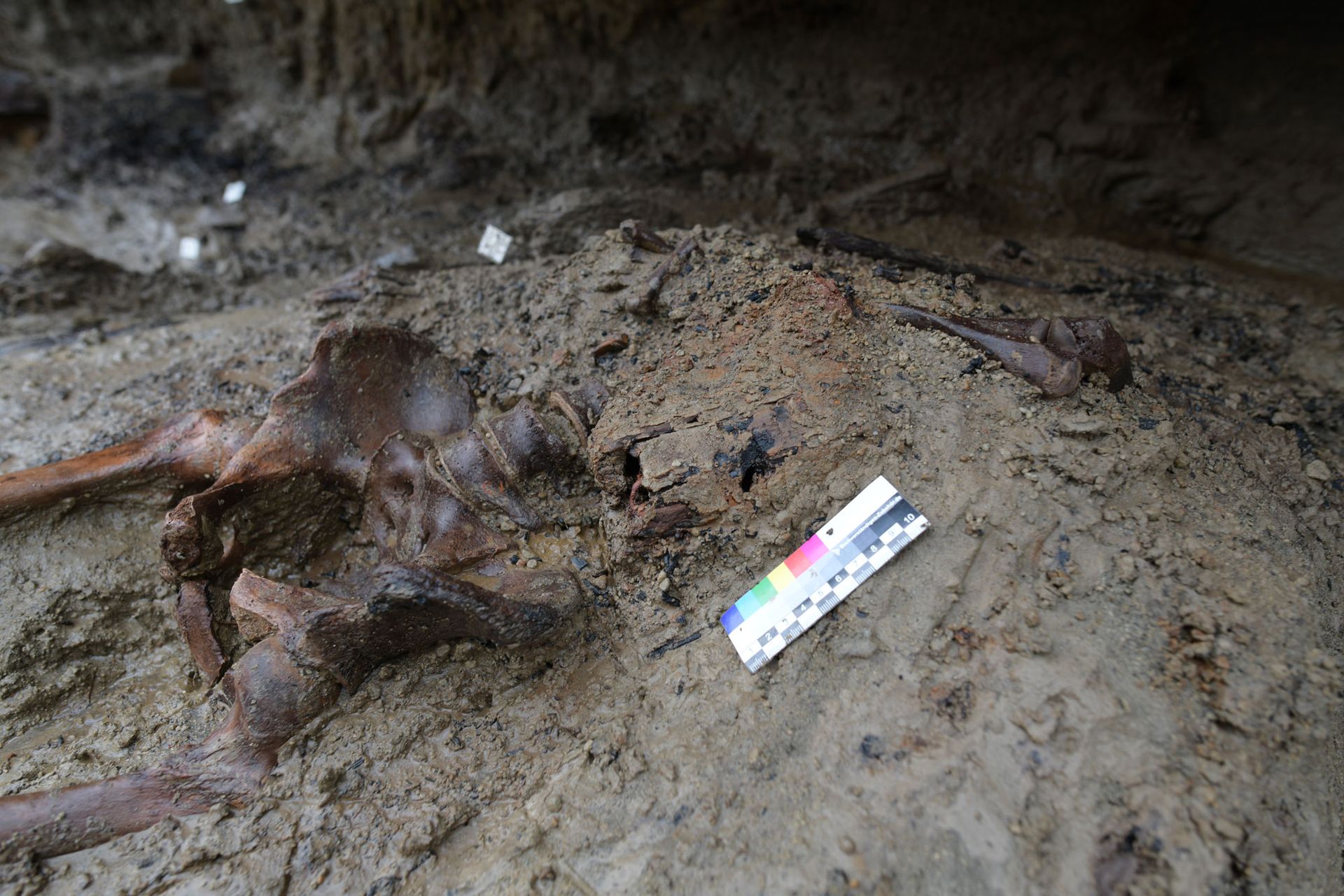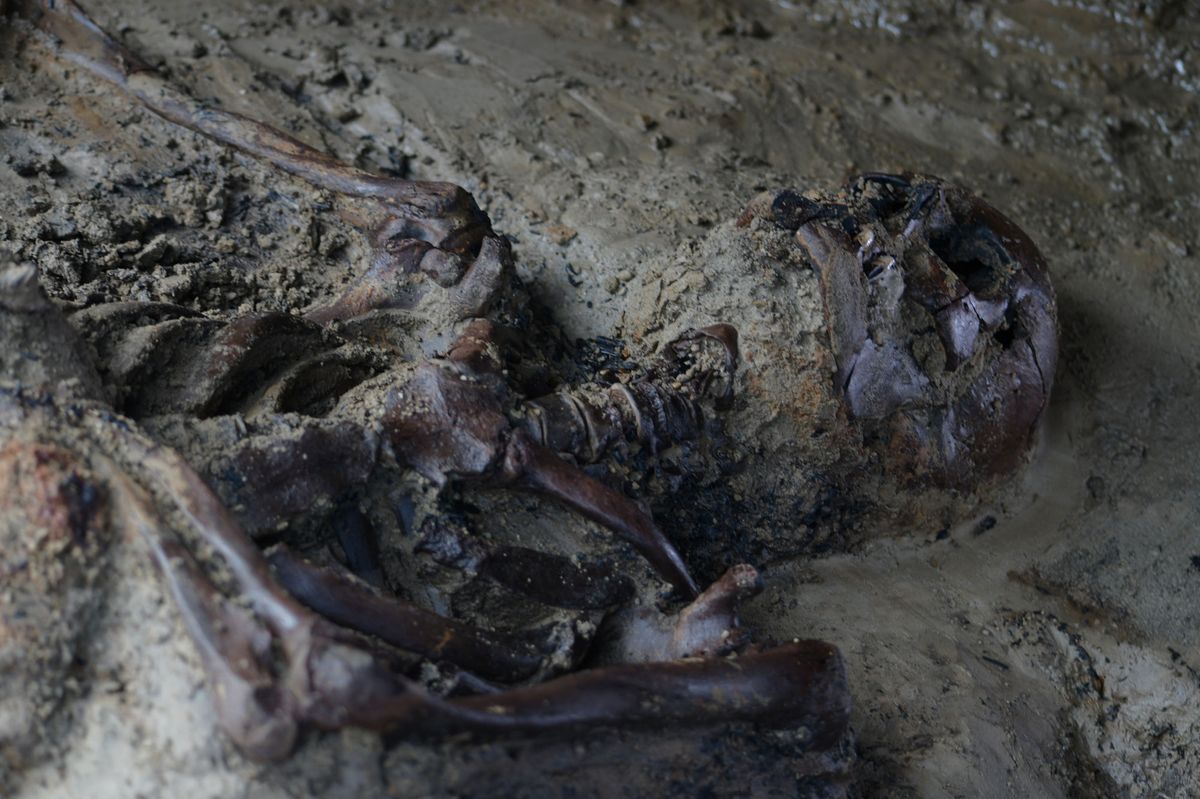In the first excavations of the ancient Roman town of Herculaneum since the 1980s, archaeologists have brought to light the skeleton and personal effects of the so-called “last fugitive” who was killed when Mount Vesuvius erupted in AD79. The recent discoveries were presented to press on 1 December.
Around a month into the two-and-a-half year excavations at Herculaneum’s ancient beach, the remains of a man aged between 40 and 45 were found with a heavily blackened skull and bones and with numerous heat-induced fractures. Under the left arm of the skeleton was a cloth shoulder bag inside which an initial analysis has identified various materials: a wooden box containing objects in metal, pieces of cloth and probable traces of gold finish.
The evidence suggests the man was on the seashore at the time of death or had been dragged there from the city above by the force of the eruption. Upon impact, he suffered the same fate as the 330 victims whose bodies were discovered sheltering in arched boat sheds on the shore in previous decades. The extremely high temperatures of the pyroclastic flow from Vesuvius caused human tissue to instantly vaporise and the skeleton was imprisoned in a mass of ash, gas and debris.

The blackened skeleton of a man aged between 40 and 45 shows numerous heat-induced fractures © Parco Archeologico di Ercolano

The skeleton was found with a cloth shoulder bag containing a wooden box and various other materials that will be subject to further analysis in the laboratory © Parco Archeologico di Ercolano
The fugitive’s skeleton is the first to have been studied outside the boat sheds using today’s “revolutionised” scientific methods, the Herculaneum archaeological park said in a statement.
The excavation project, covering a total area of 1,400 sq. m and funded by the Italian culture ministry and the Packard Humanities Institute, uses water pumps to drain the ancient beach. Ultimately, it aims to reunite the ancient coastline with the famous Villa of the Papyri, opening up public access to the beachfront in 2024.
“This is a modern excavation,” says Francesco Sirano, the director of the archaeological park, describing it as “a multidisciplinary open-air laboratory” in which each phase of work is systematically documented.
Due to the fragility of the finds, the skeleton and the mass of earth beneath it will now be moved to a laboratory where conservators will continue their analysis, while further discoveries are expected to emerge from the ongoing beach excavations.
In recent months, archaeologists have also uncovered many pieces of wood swept on to the shore by the volcanic eruption, including timber beams, door and window frames and panels that may have belonged to the ceilings or roofs of buildings, as well as parts of boats and trees.


